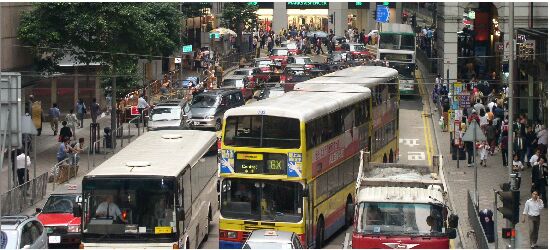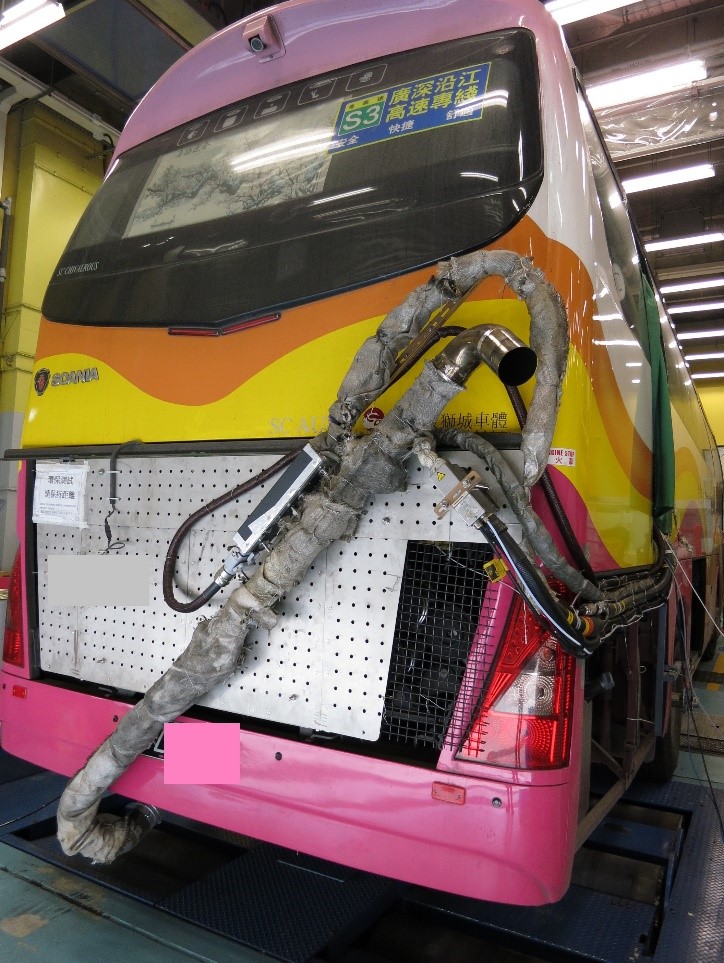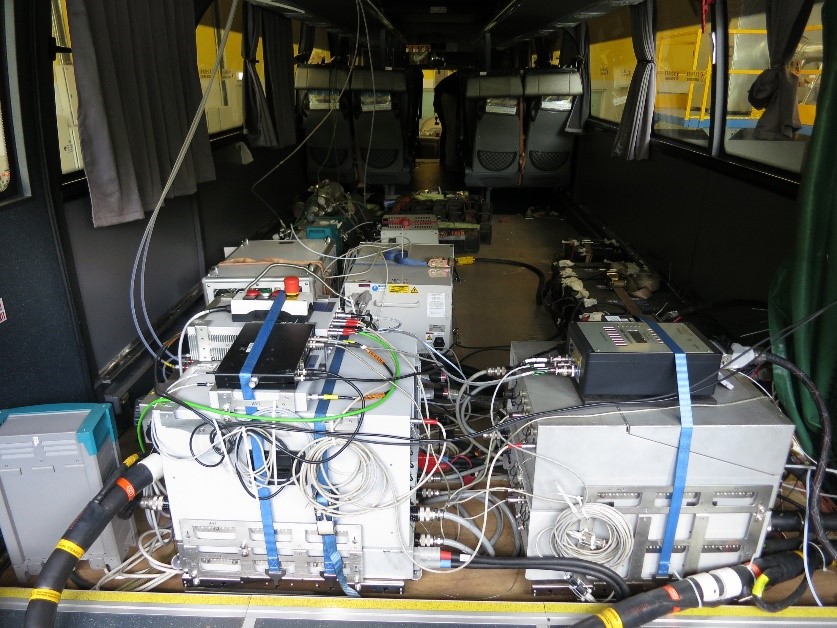|
Progress of Vehicle Emissions Control Measures Tightening Fuel and Vehicle Emission Standards Strengthening Emission Inspection and Enforcement Promoting Better Vehicle Maintenance Promoting Electric Vehicle Adoption Vehicle Emission Inventory for Local Vehicles
Progress of Vehicle Emissions Control Measures The Government has adopted an integrated vehicle emission control strategy, which has the following 6 major elements, to tackle roadside air pollution issues:
Latest Initiatives
Previous Initiatives
Tightening Fuel and Vehicle Emission Standards Vehicle emission standards Emission standards for first-registered vehicles have been tightened continuously since 1995. Currently the vehicle emission standards for motor vehicle first registration (except for diesel private cars, motor cycles and motor tricycles) were tightened to Euro VI (see table below). Compared with their Euro V counterparts, Euro VI heavy duty diesel vehicles emit about 80 per cent less nitrogen oxides (NOx) and 50 per cent less respirable suspended particulates (RSP or PM10), while Euro 6 light duty diesel vehicles emit about 55 per cent less NOx. Prevailing vehicle emission standards (by category) and their implementation dates
Japan Motor Vehicle Emission Standards (except those vehicles with design weight of more than 3.5 tonnes), United States of America Motor Vehicle Emission Standards (except Motor Cycles and Motor Tricycles) are accepted by the Air Pollution Control (Vehicle Design Standards) (Emission) Regulations. For details, please refer to Schedule 17 to 20 of the Regulations. Vehicle fuel standards Ultra low sulphur diesel (ULSD)- ULSD has a sulphur content of 0.005%, which is the Euro IV requirement for motor vehicle diesel. It became the only motor diesel fuel available at petrol filling stations in Hong Kong, after the Government introduced a concessionary duty on ULSD in July 2000. Since April 2002, ULSD has been the statutory minimum requirement for motor vehicle diesel, 3 years ahead of the European Union. Hong Kong is also the first place in Asia to introduce ULSD on a full scale for its vehicle fleet. Euro V diesel- On 1 December 2007, the Government offered a concessionary duty rate of $0.56 per litre for Euro V diesel, which has a sulphur content of 0.001%. Since then, all petrol filling stations in Hong Kong are exclusively offering this fuel. Starting from 14 July 2008, the duty rate for Euro V diesel has been waived. Biodiesel- The Air Pollution Control (Motor Vehicle Fuel) (Amendment) Regulation 2009 came into force on 1 July 2010. The Amendment Regulation provides statutory control on the specifications of motor vehicle biodiesel and the labelling requirement on selling of motor vehicle biodiesel with biodiesel content over 5%. Euro V Motor Vehicle Fuels- As from 1 July 2010, we have tightened the statutory motor vehicle diesel and unleaded petrol specifications to Euro V level. The major difference between Euro IV and Euro V motor vehicle fuels (both diesel and petrol) is the tightening of the cap on sulphur content from 0.005% to 0.001%.
Strengthening Emission Inspection and Enforcement Controlling smoky vehicles 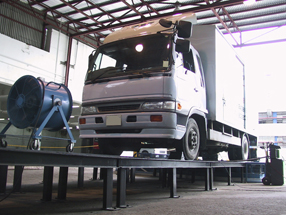
The Smoky Vehicle Control Programme (SVCP) has been in operation since 1988. This programme mainly targets diesel vehicles that emit excessive smoke due to poor maintenance. Smoky vehicle spotters who are trained and accredited by the Environmental Protection Department (EPD) will report diesel vehicles that emit excessive smoke on the road to EPD. EPD will issue Emission Testing Notices (ETNs) to the owners of the spotted vehicles, requiring them to fix the smoke problem and pass a chassis dynamometer smoke test within 12 working days. Vehicles failing the smoke test would have their licences cancelled by the Transport Department. 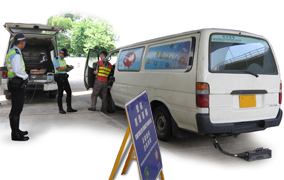
Hong Kong Police Force (HKPF) in collaboration with EPD have, from time to time, supported the programme by mounting roadside smoke-testing operations. Police officers will stop vehicles having excessive smoke emissions on road for a smoke test using a portable smokemeter. Fixed penalty ticket will be issued to the owners of vehicles failing the smoke test. The fixed penalty for smoky vehicle was raised from $450 to $1,000 on 1 December 2000. EPD will separately issue an ETN to the owner requiring them to fix the smoke problem and pass the smoke test at a DVETC within 12 working days. A majority of vehicles emitting excessive smoke are aged and poorly maintained DCVs. To improve roadside air quality and better protect public health, EPD launched an incentive-cum-regulatory scheme in March 2014 to phase out progressively some 82 000 pre-Euro IV DCVs. The number of smoky vehicles on the road has been reduced in turn, resulting in a significant drop in the number of smoky vehicle reports made by the accredited spotters.
Strengthened control of emissions from LPG and petrol vehicles From 1 September 2014 onwards, a strengthened vehicle emission regime for petrol and LPG vehicles has been implemented that includes limits for carbon monoxide (CO), hydrocarbons (HC) and NOx to improve roadside air quality. Roadside remote sensing equipment are deployed to identify vehicles with excessive emission which will be required to pass a chassis dynamometer emission test after repair. Failure to comply with the requirement will lead to cancellation of the licence of the vehicle by the Commissioner for Transport. For detail of the program, please visit the program webpage at: https://www.epd.gov.hk/epd/english/environmentinhk/air/guide_ref/remote_sensing_Petrol_n_LPG.html
Promoting Better Vehicle Maintenance Training and seminars on vehicle maintenance Since August 1999, the EPD, in collaboration with the Vocational Training Council and other organisations had been offering training sessions for vehicle mechanics on proper engine repair and maintenance to reduce emissions from vehicles. At present, vehicle maintenance courses are still being offered by the Vocational Training Council for vehicle mechanics. Since September 2014, the EPD has been deploying roadside remote sensing equipment to measure the exhaust emissions from LPG and petrol vehicles. Excessively emitting vehicles identified have to pass a chassis dynamometer based emission test to confirm that they meet the emission limits. To help the vehicle mechanics to get familiar with the new emission test, technical seminars and demonstration tests have been organised to explain the technical details. The EPD has also commissioned the Vocational Training Council to deliver free short courses to the trade teaching the technique of maintaining the LPG and petrol vehicles to pass the chassis dynamometer based emission test.
Promoting Electric Vehicle Adoption As electric vehicles (EV) have no tailpipe emissions and low carbon emission, the Government has been actively promoting EV adoption and has formulated a series of policies and measures. In March 2021, the Government announced the first Hong Kong Roadmap on Popularisation of Electric Vehicles, which will guide Hong Kong’s future direction to the target of zero vehicular emissions early. For details, please see Promotion of Electric Vehicles in Hong Kong.
Vehicle Emission Inventory for Local Vehicles A comprehensive understanding of motor vehicle emissions from road transport enables the EPD to formulate targeted policies and measures for reducing vehicle pollutants effectively. To achieve this, the vehicle emission inventory for local vehicles is compiled annually as a critical component among others of the broader Hong Kong Air Pollutant Emission Inventory, which tracks the amount of air pollutant emissions from all major sources across Hong Kong. To ensure robust inputs for the vehicle emission inventory, the EPD gathers information through various methods. A cornerstone of this effort is the use of Portable Emission Measurement Systems (PEMS) to capture real-world tailpipe emissions from a representative sample of in-use vehicles. Globally recognized as a standard for accuracy, PEMS provides dynamic emission data under diverse driving conditions, addressing limitations of the standardised driving conditions of laboratory testing. By using emission factors derived from PEMS measurement data alongside with the traffic data collected from other sources, the EPD estimates the vehicle emission inventory with reasonable accuracy. This data-driven approach not only quantifies total air pollutant emissions from road transport but also evaluates the efficacy of existing emission control measures, ensuring robust adaptive and evidence-based policymaking.
|
||||||||||||||||||||||||||||||||||||||
|
The above measures have brought a significant improvement of roadside air quality. Compared with 1999, the concentrations of major air pollutants recorded at the roadside air quality monitoring stations have been on a declining trend in 2024: the annual average concentrations of respirable suspended particulates (RSP), fine suspended particulates (FSP), NO2, and sulphur dioxide (SO2) have dropped by 66%, 63%, 34% and 89% respectively. Although NO2 concentration at the roadside has dropped by about 47% from its peak in 2011, it is still at a high level, and the annual average concentration exceeds the respective annual Air Quality Objective. This remains a key challenge we need to tackle. To further improve roadside air quality and tackle the NO2 problem, we have embarked on additional vehicle emission control measures including the phasing out Euro IV DCVs; strengthening the emission control of petrol and LPG vehicles through the deployment of roadside remote sensing equipment and chassis dynamometers for emission testing. The Government is also actively promoting electric vehicle adoption in Hong Kong.
|
